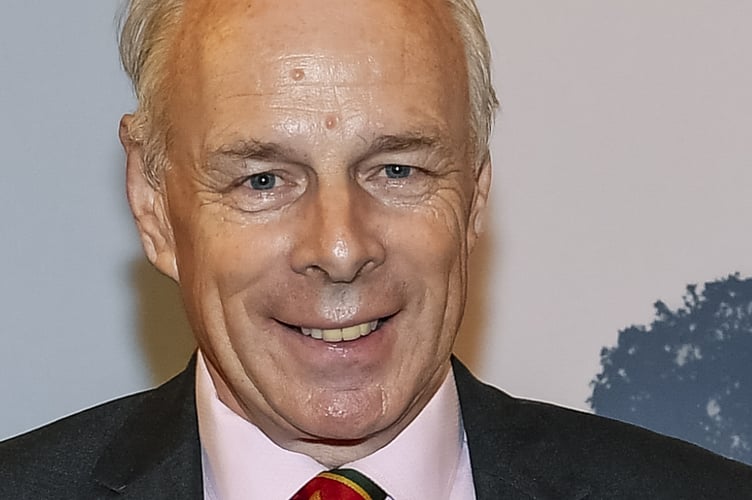WATER levels in Wimbleball Lake, on Exmoor, appeared to be at a critical point this week as it plunged to a new record low of below 80 per cent empty.
Figures showed Wimbleball stood at only 17.2 per cent of its capacity with 3,700 million litres of water against 21,320 million litres when it is full.
This time last year, Wimbleball was more than 70 per cent full, while the previous record low was 26.4 per cent experienced during the last drought year of 1995, which was also the last time South West Water (SWW) introduced water usage restrictions.
West Somerset MP Ian Liddell-Grainger this week demanded answers from SWW as to how it planned to meet future demand with Wimbleball now so empty.
Mr Liddell-Grainger said: “South West Water appears to have been recklessly allowing Wimbleball to drain while betting the house on autumn and winter rains arriving to replenish it.
“So far, they have not materialised. September brought 97 per cent of the average rainfall but early October delivered only 15 per cent.

“And given that we appear to have moved into a pattern of dry springs, there remains only a narrow window of opportunity to get Wimbleball re-stocked and so avoid catastrophic water shortages next summer.
“We should be told whether South West Water is planning to activate the system which allows it to pump water from the Exe up to Wimbleball – and if not, why not.”
Mr Liddell-Grainger said the National Drought Group recently heard that without ‘unusually heavy rains’ this winter, drought conditions would remain beyond next spring in some areas, notably in parts of the West Country.
He said even if those heavy rains materialises there would be a lag in replenishing water tables and by inference in re-filling reservoirs, with farmers under warning they could see restrictions on irrigation into next summer.
Mr Liddell-Grainger said it was ‘incredible’ that water use restrictions were not imposed earlier in the year after a dry spring had moved into a summer marked by an absence of rain and record-high temperatures.
“South West Water must explain to consumers why it did not order water restrictions earlier this year, and whether that inaction has anything to do with the fact that with virtually every home now metered such restrictions would mean people would be buying less water, with a considerable impact on its profits,” he said.
A SWW statement for the Free Press this week highlighted ‘continued pressure on the region’s water resources’ and how people living in or visiting the South West were being asked to redouble their efforts to reduce the amount of water they used.
Addressing the situation in Wimbleball Lake, SWW accepted water levels were ‘extremely low, like the rest of the South West’.
A company spokeswoman said: “We are monitoring our reservoir levels daily and working closely with the Environment Agency on our agreed drought plan. We will utilise all the water which is available and suitable for use within Wimbleball but these levels depend on a number of factors from site to site. It is not possible to say exactly when Wimbleball will reach normal levels again.
“This depends on a number of factors, including the level of rainfall and demand.
“Levels have not been this low across the region since 1995, however, with the return of more autumnal weather, the reservoir should start to refill from November.
“Our focus is on ensuring secure supply to our customers and communities. We will update customers as the situation changes.”
The company said it was taking a number of measures to protect supplies, including re-routing water around its network to the worst-affected areas, and had been doing so for some months.
Applications had been made for drought permits to increase abstraction volumes into reservoirs, new water sources had been identified across the region, and a hosepipe ban had been upheld in Cornwall and parts of Devon.
At the same time, the company was helping customers reduce their water usage to bring down demand by providing a number of free water-saving devices, which has cut demand by about 10 per cent since the summer.
The spokeswoman said: “As we have said in the statement, if the prolonged dry weather continues and demand does not decrease, this may mean the introduction of additional restrictions over the coming weeks, such as asking businesses to only use water for essential purposes.”
SWW water resources director Dr Lisa Gahan said: “We need significant and sustained rain this autumn to refill our rivers and reservoirs, and this currently is not forecasted. It has been exceptionally dry and hot this year, with one of the driest periods in the South West for over 130 years, and rivers have been more adversely affected than during the 1976 and 1995 droughts. We are seeing the direct consequences of climate change.
“Our rain is becoming less consistent. When it does rain, it increasingly arrives in short intensive bursts onto land hardened by long periods with little or no rain, which does not absorb the water as effectively as soft soil.
“Rest assured, we are doing more now than ever before to help secure supply.”
More than 90 per cent of SWW’s supply comes from surface water sources with Wimbleball the third-largest reservoir in the area, but together the water company’s five largest reservoirs now hold just 29.3 per cent of their combined capacity.
Wessex Water-owned reservoirs Clatworthy and Hawkridge were also below average capacity, as were groundwater levels following the driest start to a year since 1976.
A spokesman said: “However, through our recently completed water supply grid - a £230 million investment - we have been able to move water around our region to the areas that need it most. We have also been ‘topping up’ rivers to help with low watercourse levels.
“Even though we might see more rainfall over the coming months, to make sure our water resources fully recover so we are in a good position for 2023, it is important that customers continue using water wisely throughout the winter.”




Comments
This article has no comments yet. Be the first to leave a comment.